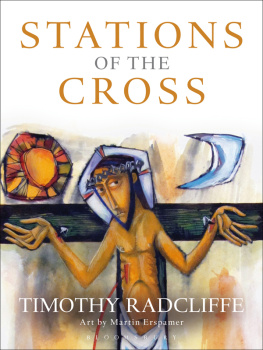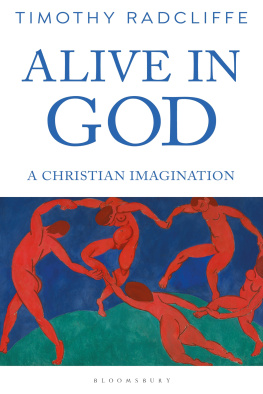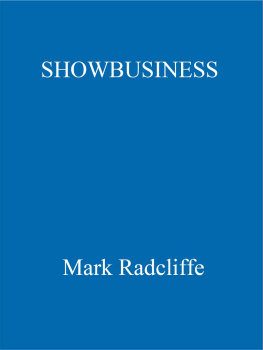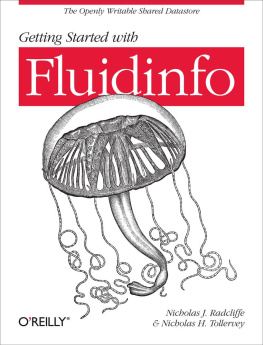Ann Radcliffe - The Italian
Here you can read online Ann Radcliffe - The Italian full text of the book (entire story) in english for free. Download pdf and epub, get meaning, cover and reviews about this ebook. year: 2017, publisher: Oxford University Press, genre: Art. Description of the work, (preface) as well as reviews are available. Best literature library LitArk.com created for fans of good reading and offers a wide selection of genres:
Romance novel
Science fiction
Adventure
Detective
Science
History
Home and family
Prose
Art
Politics
Computer
Non-fiction
Religion
Business
Children
Humor
Choose a favorite category and find really read worthwhile books. Enjoy immersion in the world of imagination, feel the emotions of the characters or learn something new for yourself, make an fascinating discovery.
- Book:The Italian
- Author:
- Publisher:Oxford University Press
- Genre:
- Year:2017
- Rating:4 / 5
- Favourites:Add to favourites
- Your mark:
- 80
- 1
- 2
- 3
- 4
- 5
The Italian: summary, description and annotation
We offer to read an annotation, description, summary or preface (depends on what the author of the book "The Italian" wrote himself). If you haven't found the necessary information about the book — write in the comments, we will try to find it.
The Italian — read online for free the complete book (whole text) full work
Below is the text of the book, divided by pages. System saving the place of the last page read, allows you to conveniently read the book "The Italian" online for free, without having to search again every time where you left off. Put a bookmark, and you can go to the page where you finished reading at any time.
Font size:
Interval:
Bookmark:

Ann Radcliffe (ne Ward) was born in London in 1764. Her father was a reputable haberdasher who took up the management of a porcelain showroom in Bath for the business partners Thomas Bentley and Josiah Wedgwood. Anns childhood was subsequently spent with her parents in Bath, and with her uncle in fashionable Chelsea, which may have exposed her to radical politics and philosophy, as well as immersing her in the vibrant Dissenting culture of rationalism, radicalism, and republicanism.
In 1787 Ann Ward married William Radcliffe, an Oxford-educated journalist, who wrote for and soon became the editor of the Gazetteer, and New Daily Advertiser, a campaigning newspaper that celebrated the French Revolution, freedom of the press, and Dissenters rights. Ann, meanwhile, appears to have taken up writing out of boredom. She wrote a succession of increasingly popular romance novelsThe Castles of Athlin and Dunbayne (1789), A Sicilian Romance (1790), and The Romance of the Forest (1791)before The Mysteries of Udolpho (1794) set a dazzling new standard in supernatural romantic fiction, variously dubbed at the time the Terrorist System of Novel Writing, the hobgoblin-romance, and ultimately the Radcliffe school. Radcliffes profits from her writing enabled her husband to quit his job, and the two of them toured the Netherlands and Germany, which she later described in a travelogue, A Journey made in the Summer of 1794, through Holland and the Western Frontier of Germany to which are added Observations during a Tour to the Lakes (1795). The Italian (1797), written at the height of her powers, was also the last of the works of the great Enchantress to be published in her lifetime. Despite her international celebrity, little is known of the remainder of Radcliffes life, and she died in 1823. Her last novel, Gaston de Blondeville, was published in 1826, together with poetry, further travel writings, and a memoir by Thomas Noon Talfourd.
Nick Groom is Professor in English at the University of Exeter. He has published widely for both academic and popular readerships, and his many books include The Forgers Shadow (2002), The Union Jack (2006), The Gothic: A Very Short Introduction (2012), The Seasons: An Elegy for the Passing of the Year (2013), and several editions of eighteenth-century texts. He has edited Horace Walpoles The Castle of Otranto (2014) and Matthew Lewiss The Monk (2016) for Oxford Worlds Classics.
For over 100 years Oxford Worlds Classics have brought
readers closer to the worlds great literature. Now with over 700
titlesfrom the 4,000-year-old myths of Mesopotamia to the
twentieth centurys greatest novelsthe series makes available
lesser-known as well as celebrated writing.
The pocket-sized hardbacks of the early years contained
introductions by Virginia Woolf, T. S. Eliot, Graham Greene,
and other literary figures which enriched the experience of reading.
Today the series is recognized for its fine scholarship and
reliability in texts that span world literature, drama and poetry,
religion, philosophy, and politics. Each edition includes perceptive
commentary and essential background information to meet the
changing needs of readers.

Great Clarendon Street, Oxford, ox 2 6 dp United Kingdom
Oxford University Press is a department of the University of Oxford. It furthers the Universitys objective of excellence in research, scholarship, and education by publishing worldwide. Oxford is a registered trade mark of Oxford University Press in the UK and in certain other countries
Introduction, Select Bibliography, Chronology,
Explanatory Notes Nick Groom 2017
The moral rights of the authors have been asserted
First published by Oxford University Press 1968
First published as a Worlds Classics paperback 1981
Reissued as an Oxford Worlds Classics paperback 1998, 2008
New edition 2017
Impression: 1
All rights reserved. No part of this publication may be reproduced, stored in a retrieval system, or transmitted, in any form or by any means, without the prior permission in writing of Oxford University Press, or as expressly permitted by law, by licence or under terms agreed with the appropriate reprographics rights organization. Enquiries concerning reproduction outside the scope of the above should be sent to the Rights Department, Oxford University Press, at the address above
You must not circulate this work in any other form and you must impose this same condition on any acquirer
Published in the United States of America by Oxford University Press 198 Madison Avenue, New York, NY 10016, United States of America
British Library Cataloguing in Publication Data
Data available
Library of Congress Control Number: 2016946823
ISBN 9780198704430
ebook ISBN 9780191009556
Printed in Great Britain by Clays Ltd, St Ives plc
Judith Luna commissioned this edition, for which I am most grateful. Luciana OFlaherty, assisted by Kizzy Taylor-Richelieu, has been an extremely patient and attentive editorwhich I have very much appreciatedand the edition has benefited significantly from the scrupulous attention and keen eye for detail of the copy-editor, Rosemary Roberts. The British Library kindly granted permission to print the manuscript material in Appendix II. My thanks are due to Jonathan Barry, Greg Buzwell, Steve Poole, and Dale Townshend, and, as ever, to my family. My interest in Radcliffes writings developed through lively debate with my students, and I would like to acknowledge them here. This edition is dedicated to my research studentspast, present, and future.
After writing The Italian, Ann Radcliffe reputedly went mad. The signs were already there: she had, it was said, written that suffocatingly claustrophobic book during the year 1796, by candlelight with the shutters and curtains closed against the outside world. But Ann Radcliffe had lost neither her wits nor her life to her art: financially independent and jaded by criticism of her work, in the wake of the publication of The Italian she had, at the age of 32, simply retired into genteel affluence and obscurity. She travelled with her husband (and their dog), received the occasional visitor, and lived a life of ease until she did eventually die more than a quarter of a century later.
As the best-selling novelist of the decade, Radcliffe defined 1790s terror fiction, mixing sublime aesthetic effects with Enlightenment empiricism and ratiocination into a characteristic style that sought to exhilarate rather than shock readers. She dwelt on the psychological effects of fear and dread while disdaining supernatural sensationalism. Eighteenth-century concepts of the emotions and sense-perception are consequently at the heart of Radcliffes work, and she is as much the heir of debates on education and socio-political thinking as she is of Horace Walpoles Gothic tale The Castle of Otranto (1764). But her interest was not simply theoretical; she also provided a practical example in confronting and overcoming the issues that faced women in the literary world. In her career, Radcliffe was a trail-blazer: she demonstrated that women could be professional writers and earn a living by the pen.
Font size:
Interval:
Bookmark:
Similar books «The Italian»
Look at similar books to The Italian. We have selected literature similar in name and meaning in the hope of providing readers with more options to find new, interesting, not yet read works.
Discussion, reviews of the book The Italian and just readers' own opinions. Leave your comments, write what you think about the work, its meaning or the main characters. Specify what exactly you liked and what you didn't like, and why you think so.












